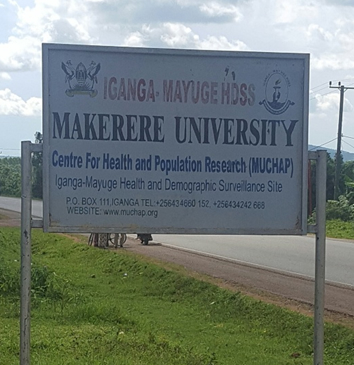1950s
Introduction of Preventive Medicine
Preventive medicine was introduced as an academic discipline within the Faculty of Medicine at the University of East Africa, now Makerere University. The Faculty of Medicine, founded in 1923 at Mulago Hill in Kampala, was the first medical school in East and Central Africa.
1957
Establishment of the Department of Preventive Medicine
The discipline evolved into a full-fledged department within the Faculty of Medicine. Professor George W. Gale was the first head of the department.
1959
Kasangati Health Center Established
With support from the Rockefeller Foundation, the Faculty of Medicine developed an interdepartmental program at Kasangati Health Center, located 14 km north of Kampala. It became a model facility for integrated healthcare service delivery, research, and community-based teaching.
Late 1950s
Mwana Mugimu Nutrition Center
Established with support from Rotary International, this center was later recognized as the best nutrition unit in East Africa. Save the Children Fund provided administrative and financial support, leading to the establishment of similar units across Uganda.
1967
Concept of the Institute of Public Health (IPH) Conceived
Plans to elevate the Department of Preventive Medicine to an institute were formulated, but political instability delayed implementation.
1969
Postgraduate Diploma in Public Health (DPH)
The first postgraduate program in public health was introduced to build capacity for District Medical Officers (DMOs).
1967 – 1971
Construction of the IPH Building
With support from the Rockefeller Foundation and the governments of Denmark and Norway, the current School of Public Health building at New Mulago was completed in 1971.
1971
Introduction of Masters in Medicine (Public Health)
A three-year program was added to train public health specialists and academic consultants to support primary healthcare and policy development.
Early 1970s
Establishment of the Parasitology Unit
Professor V.L. Ongom set up a unit for schistosomiasis, malaria, and filariasis research, which later became the National Laboratory under the Ministry of Health.
1975
Department Elevated to Institute of Public Health (IPH)
On July 1, 1975, the Department of Preventive Medicine was officially upgraded to the Institute of Public Health, becoming the first public health institute in sub-Saharan Africa. However, it remained under the Faculty of Medicine until it gained full autonomy in 2001.
1989
Establishment of Rakai Health Sciences Program (RHSP)
A collaborative initiative involving Makerere University and international partners to conduct biomedical research and improve healthcare in Uganda.
1991
Advanced Diploma in Health Services Management
A nine-month diploma program targeting middle-level health management professionals was introduced in collaboration with the Ministry of Health.
1994
Master of Public Health (MPH) Program
The two-year MPH program was launched based on the Public Health Schools Without Walls (PHSWOW) model, integrating field-based training with academic coursework. Partners included the Rockefeller Foundation, WHO, UNFPA, and the CDC.
1994
Ph.D. in Public Health by Research
The Ph.D. program was introduced to train researchers, university lecturers, policy analysts, and high-level public health professionals.
1999
Regional Centre for Quality of Health Care (RCQHC)
The center was established to improve healthcare quality in East, Central, and Southern Africa through capacity building and programmatic interventions.
2001
IPH Becomes Autonomous
The Institute of Public Health, headed by Prof. Fred Wabwire-Mangeni as its director, was granted autonomous status and thus became independent from the Faculty of Medicine. The attainment of autonomy was accompanied by the establishment of four departments:
- Epidemiology and Biostatistics (Dr. Joseph Konde Lule as the first head of the department)
- Health Policy, Planning, and Management (Dr. George William Pariyo as the first head of the department)
- Community Health (Dr. Christine Zirabamuzaale as the first department head)
- Disease Control and Environmental Health (Dr. David M. Serwadda as the first head of department)

2004
Iganga-Mayuge Health and Demographic Surveillance (MUCHAP) Established
The Iganga-Mayuge Health and Demographic Surveillance site, now Makerere Centre for Health & Population Research (MUCHAP), was established by Makerere University in collaboration with Karolinska Institutet and Iganga and Mayuge districts in Eastern Uganda, with funding from the Swedish International Development Cooperation (SIDA). Operations started in August 2004 with a baseline census. The site aimed to serve as a training site and platform for graduate student and faculty operations and epidemiological research to inform policy and practice. The center has facilitated and conducted several ground-breaking research studies in various areas, including but not limited to maternal, newborn, and child health and non-communicable diseases (NCDs), which have informed policy and practice at different levels in the country and beyond.
2007
IPH Elevated to MakSPH
The Institute of Public Health, then headed by Prof. David Serwadda, was elevated to a School of Public Health and later made a constituent school of the Makerere University College of Health Sciences.
2009
Establishment of Finance Management Unit (FMU)
The accounting unit was officially transformed into a Financial Management Unit in 2009.


